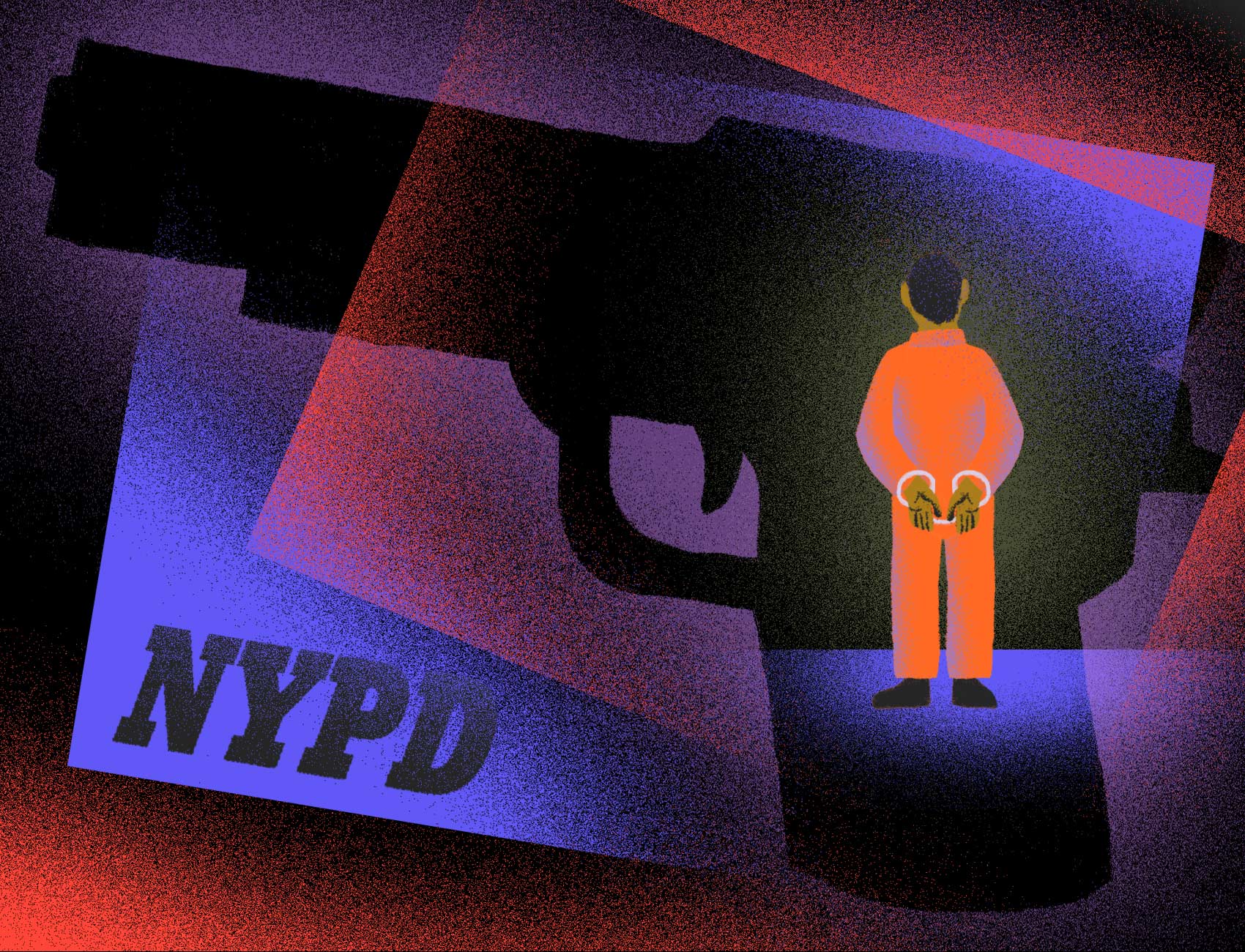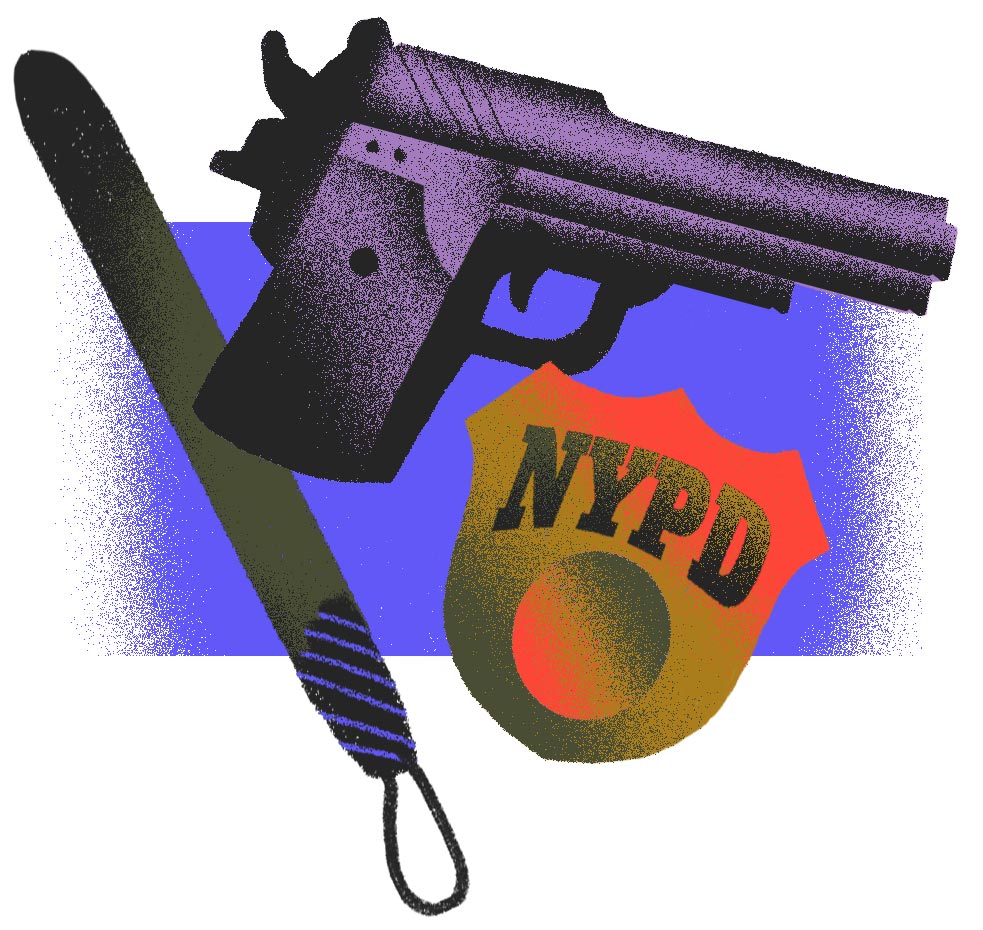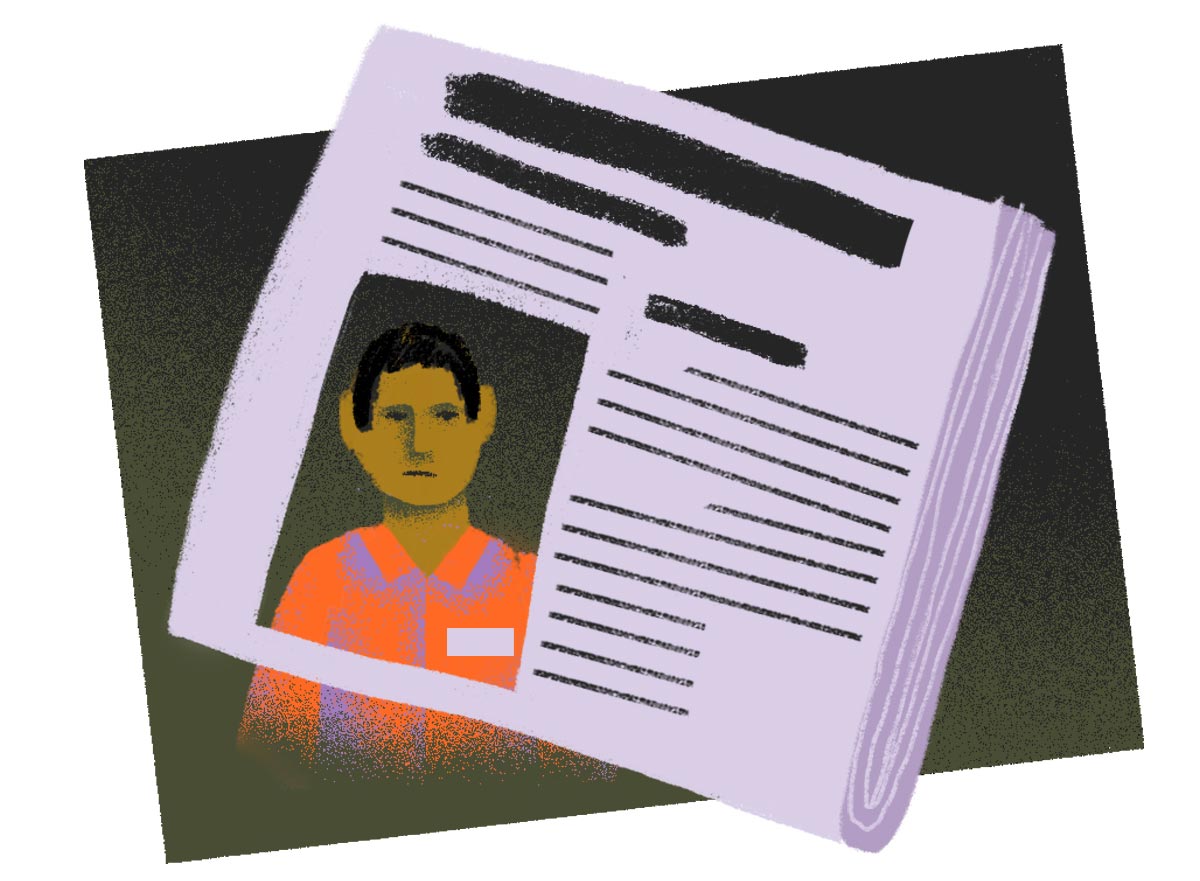‘They Can Do This To Anybody’
Misconduct complaints against officers in the NYPD’s 34th Precinct have risen for three years straight. In 2018, 15 officers had complaints against them substantiated, the most of any precinct in New York City.

It was Christmas Eve 2016, and Malik Ferrer stood outside a Manhattan nightclub, freezing and lamenting that he’d left his jacket inside.
The Bronx resident was celebrating the birth of a friend’s child at the Playroom Lounge on 10th Avenue, located in a section of the Inwood neighborhood known for raucous nightspots catering to a mostly Dominican crowd.
Shivering in a T-shirt and jeans, Ferrer tried to get back into the club to retrieve his jacket but was shoved away by the bouncer. Infuriated and, by his own admission, more than a little drunk, Ferrer kicked in the glass door of the club.
The bouncer called 911, and officers from the 34th Precinct arrived at the scene, took the bouncer’s statement, placed Ferrer in handcuffs, and searched him. The search was conducted by Officers Carlos Del Rosario and Rafael Moscoso, who found no weapons. Del Rosario retrieved Ferrer’s jacket from inside the club and transported him to the 34th Precinct, where the two officers searched Ferrer again. He was then detained in a holding cell.
A few hours later, Del Rosario drove Ferrer to the Northern Manhattan NYPD hub at the 28th Precinct, where people booked uptown are taken before being transported to the Manhattan Detention Complex in Lower Manhattan. There, desk officer Daniel Molina pulled a loaded .22 caliber revolver from the pocket of Ferrer’s jacket. This was the fourth search of Ferrer and his belongings—but it was the first to produce a weapon.
Ferrer was then charged with three felonies for criminal possession of a weapon and jailed for 18 days on $50,000 bail before his family could raise cash for his release.
“The most baffling thing is how this gun ended up in Malik’s jacket,” said Robert Perry, an attorney for Ferrer.
Ferrer’s experience with the 34th Precinct—Manhattan’s northernmost NYPD command—is not isolated. Over the last few years, the precinct has been the subject of evidence planting and excessive force allegations that recall the NYPD’s dark early 1990s era, when a hard-charging plainclothes unit came under federal scrutiny.
As of November, 10 officers in the 34th Precinct had complaints against them substantiated by the Civilian Complaint Review Board (CCRB), the highest total of any Manhattan precinct. CCRB complaints filed against 34th Precinct officers rose from 41 in 2016 to 64 in 2018. At least twenty-seven of the complaints in 2018 involved uses of force. Also that year, 15 officers in the 34th Precinct had complaints against them substantiated by the CCRB, the highest tally of any NYPD precinct.
The CCRB would not comment when The Appeal asked about complaints related to the 34th Precinct. The board and other law enforcement and oversight agencies are barred from disclosing information regarding complaints against individual officers as a result of the de Blasio administration’s interpretation of Section 50-a of New York State’s civil rights law. Since 2016, the city has refused to release information about disciplinary actions against individual officers; before then, such information was made available to reporters by the NYPD’s public information office.
The CCRB does not investigate allegations of corruption. That responsibility belongs to the Internal Affairs Bureau, which declined to comment on Ferrer’s case.
In response to a query from The Appeal about the disciplinary record of police officers assigned to the 34th Precinct, NYPD spokesperson Al Baker wrote in an email: “The 34th Precinct, which covers Washington Heights and Inwood, in Northern Manhattan, was one of the first precincts in New York City to institute Neighborhood Policing. This NYPD policing philosophy is foundational to building community trust and keeping New York City safe.” Baker also noted that the 34th Precinct was one of the first precincts in the city to receive body-worn cameras in April 2017.

During the height of the crack epidemic in the early 1990s, the 34th Precinct tallied one of the highest homicide and violent crime rates in New York City. The precinct was home to an elite, plainclothes anti-crime team operating in Inwood and Washington Heights known as “Local Motion,” after a sticker plastered on the rear window of a beat-up vehicle used by undercover officers. Local Motion was one of the NYPD’s most aggressive squads, targeting large open-air drug markets and gun battles between rival crews in Inwood and Washington Heights. In 1991, Local Motion racked up 438 felony arrests.
Back then, federal law enforcement eyed not just drug dealers in the 34th Precinct—but the police, too. In June 1992, the U.S. attorney for the Southern District of New York initiated an investigation after allegations that 34th Precinct officers turned a blind eye to drug dealing in exchange for cash, or even worked as enforcers for drug gangs.
Although the federal investigation of the 34th Precinct never uncovered drug dealing or protection rackets, it zeroed in on the Local Motion plainclothes unit. Court documents reviewed by The Appeal, including federal grand jury transcripts, reveal that the plainclothes officers were scrutinized over allegations of making false statements and planting evidence on suspects they arrested for gun and drug violations in six incidents stretching from 1991 to 1992. The allegations were made when Terence Monahan, currently the NYPD’s Chief of Department, was second in command of the 34th Precinct.
On July 4, 1992, Local Motion officer Michael O’Keefe fatally shot an armed local drug dealer, Jose “Kiko” Garcia, setting off riots by angry young Dominican men in Washington Heights and Inwood. Although O’Keefe was cleared of wrongdoing, the incident drew increased scrutiny to Local Motion.
In October 1992, Local Motion officer Patrick Regan and two other officers, Matteo Brattesani and Thomas McPartland, claimed they saw Jorge Almonte drop a plastic bag filled with marijuana, crack, and cocaine on the sidewalk. The officers said they pursued Almonte into a basement apartment on 187th Street near Audubon Avenue, where they arrested him and seized a pistol.
But in December that year, the criminal case against Almonte fell apart when his defense attorney confronted federal prosecutors with witness testimony that directly contradicted the Local Motion officers. Another federal drug and gun case involving five pounds of cocaine seized from an apartment on Wadsworth Avenue in Washington Heights had to be thrown out after defense attorneys found evidence that officers McPartland and Arthur Barragan lied about the circumstances of the case.
Stung by the embarrassing court losses and alarmed at the conduct of the Local Motion officers, the U.S. attorney’s office and local prosecutors reviewed all federal and state cases brought by the unit. In total, federal investigators found six cases where the statements by Local Motion officers did not hold up under scrutiny.
On Jan. 10, 1995, the U.S. attorney for the Southern District of New York filed perjury charges against officer Regan after he was caught on a recorded phone call instructing a Local Motion informant to lie about his relationship with the anti-crime unit. Regan also lied about the content of the calls to a grand jury that was investigating Local Motion corruption.
“Patrick Regan thought he could get away with it, he thought he could get away with those lies,” Assistant U.S. Attorney Matthew Fishbein said in his opening statement in Regan’s trial in August 1995. “He made a calculated risk that no would would ever discover that he was lying in the grand jury.”
During Regan’s trial, federal prosecutors also alluded to similar conduct by his Local Motion colleagues that did not result in criminal charges.
“This investigation established evidence that members of the anti-crime unit had committed perjury and made false statements,” Assistant U.S. Attorney Deborah Landis wrote in a 1995 motion.
Indeed, evidence presented during Regan’s trial demonstrated widespread misconduct by Local Motion officers.
In one recorded call used by prosecutors to secure the Regan indictment, Regan talked about the unit’s defiant attitude toward the federal inquiry.
“Don’t run away from your problem. Face it direct on, OK?” he told his informant. “We are Local Motion. We don’t fucking run from nobody, I don’t care who they are.”
In 1996, Regan was convicted and sentenced to one year and a day in federal prison.
That same year, an internal affairs memo cleared the Local Motion unit of misconduct in the Almonte arrest and recommended that no administrative charges be filed against them.

Nearly three decades later, officers in the 34th Precinct still face accusations of evidence planting and collusion with drug dealers.
In March 2018, Officer Valdrin Nikqi arrested Frankie Breton in the Bronx for marijuana possession and gun possession. Breton’s lawyer, Andrew Stengel, argued that the arrest was unjustified and that a cover story was concocted to conceal an illegal search. Stengel later discovered that Officer Nikqi had an undisclosed history of untruthfulness.
On May 29 this year, prosecutors with the Bronx district attorney’s office disclosed that Breton’s arrest also involved Sgt. Elvin Pichardo, a former officer with the 34th Precinct who worked in its Street Narcotics Enforcement Unit and was dogged by corruption allegations. According to filings in a civil rights lawsuit alleging that Pichardo fabricated marijuana charges, Pichardo’s internal affairs files include allegations that he attempted to shake down drug dealers, asked for bribes and protection money, planted drugs on individuals, and looked up warrants for unauthorized purposes.
The NYPD declined to comment on Pichardo’s alleged conduct, citing pending litigation. The Appeal was unable to reach Pichardo for a response.
In 2009, internal affairs charged Pichardo with unauthorized access of a computer system. According to the transcript of a Nov. 8, 2009 hearing, Pichardo claimed in a deposition that “the reason he was doing that was because of his brother, who was overseas, and that he was checking a warrant.” The allegations against Pichardo were sustained.
In July 2018, 34th Precinct detective Fabio Nunez allegedly choked and tased Tomas Medina, a 33-year-old Inwood resident, over a noise complaint. The incident was captured on video and Medina filed a federal civil rights lawsuit in October against Nunez, several other officers involved in his arrest, and the NYPD. The lawsuit alleges that the Medina incident exemplifies “34th Precinct officers’ reputation for brutality, lies, and corruption,” citing the rise in civilian complaints in recent years and Nunez’s disciplinary record. He has been the subject of 17 separate CCRB complaints since he joined the NYPD in 2000, including several allegations of excessive force.
According to a Legal Aid database of civil rights lawsuits, Nunez has been sued at least five times since 2005, resulting in at least $220,000 in legal settlements by the city over his conduct. According to civil rights complaints, Nunez was involved in an arrest that left a man with a broken arm, an incident where a man was pummeled with the butt of a gun following a foot chase, and an incident where Nunez and fellow officers allegedly stole cash, three necklaces, a diamond bracelet, and six rings during an arrest at a home on 205th Street. Nunez is on the Manhattan district attorney’s list of police officers with documented credibility issues.
“For years the NYPD has failed to discipline officers like Nunez who use chokeholds, and it’s time to send a clear message to officers that if you go for the neck, you will lose your job with very limited exceptions,” said Cynthia Conti-Cook, a staff attorney with the Legal Aid Society’s Special Litigation Unit.
The NYPD declined requests for comment on Nunez’s alleged chokehold on Medina or his disciplinary history, due to ongoing litigation. The Appeal was unable to reach Nunez.
However, NYPD spokesperson Al Baker did give a statement defending the service records of Del Rosario, Pichardo, and Nunez.
“For all three of these officers, they have made numerous arrests that did not lead to any civil litigation, but in fact helped keep people in New York City safe from violence and disorder,” Baker said.
Even though the CCRB substantiated Medina’s complaint against Nunez and brought administrative charges against him, the Manhattan district attorney’s office did not drop misdemeanor assault, resisting arrest, and disorderly conduct charges against Medina, who accepted an adjournment in contemplation of dismissal in the case.
Officer Del Rosario told internal affairs investigators that the pistol found when Ferrer was transferred to the 28th Precinct was hidden in a slit in the lining of his jacket. But at Ferrer’s trial, Del Rosario testified that when he searched the jacket again after the gun was found, it looked like there was a slit in the lining. He also said that when he physically examined the “slit” in preparation for trial, he realized it was just a seam in the jacket pocket.
On Nov. 9, 2018, a Manhattan jury acquitted Ferrer on all of the charges in his case.
In June of this year, Ferrer filed a civil rights claim for false arrest with the city comptroller. He received a $95,000 settlement.
A May 2018 investigation by the Internal Affairs Bureau found Del Rosario at fault for failing to conduct a proper search in Ferrer’s case. In response to a request for the final discipline meted out in this incident, the NYPD said the internal affairs process was complete, but it did not disclose the specific punishment.
But the bureau didn’t investigate where the .22 caliber pistol came from, if Del Rosario or another officer planted the weapon on Ferrer, or if Del Rosario’s statements about finding the gun in a slit of Ferrer’s jacket raised questions about the officer’s truthfulness.
The Appeal was unable to reach Del Rosario for comment.
“They can do this to anybody. If they’re that kind of cop, they shouldn’t be working,” Ferrer told The Appeal. He said that he now avoids Inwood as much as possible, even though his child goes to school in the area. The civil rights lawsuit, he said, was not about winning monetary damages but instead a way to provide answers about his arrest.
“I really wanted to find out who put the gun on me,” Ferrer said.
“I feel like that precinct is connected to the drugs, the clubs, the gangs,” he said. “If they’re that type of cop, they shouldn’t be working. It was so close to things going the other way for me.”
Correction: An earlier version of this article misstated the disposition of Tomas Medina’s case at the Manhattan district attorney’s office. He did not plead out to several misdemeanors; he accepted an adjournment in contemplation of dismissal in the case.
